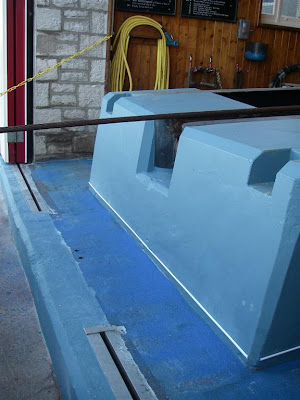
Anonymous asked this question:
How do you choose which crew to take on each shout if more than needed turn up at the boathouse? Is it down to experience or a mix of the novices and the hardened crew?Now there's a question! I think that it is one of those things which each station does differently and each method has it's advantages. For example:
One station I know in the north of the country runs a first come first served type system, as crew arrive they collect a tally from next to the door and the first 5 (plus mechanic and Cox'n) go on the shout. The problems with this are that you might end up with an experienced crew on a 'big' shout, it encourages speeding, the same people might always go because they live close or work close and it also encourages competitiveness amongst the crew.
Another station I know runs a sort of 'squash ladder' type arrangement. Once a crew member has done a shout they go to the bottom of the list and work their way up again. Scrupulously fair but again might mean that the boat might go with a poorly experienced crew.
I've even heard of stations which run a sort of on duty crew. For a week at a time they have a nominated crew and they are the guys who respond initially if there is a shout. Good, but again, you end up spreading your experience thinly and it does require crew to live
and work nearby.
And us? Well, we run two systems, one for the ILB and one for the ALB.
On the ILB it is a case of first come first served, that is, the first helmsman through the door commands the boat and then the next two crew (or helmsmen) go too. The Helmsman has a right of veto though, so if there is a particular need for experience or skill he can stand crew down and nominate others.
On the ALB we use the crew list as our guide. This list is in order of experience and time on the crew. The top 6 (Cox'n, 2nd Cox'n, Mechanic, Deputy 2nd Cox'n and numbers 5 & 6) automatically climb onto the boat if they are there. Then, depending on whether any of them haven't arrived, what type of shout it is, experience of the remaining crew, who's been on a shout recently and whether he can remember their names, the Cox'n will fill up the remaining spaces from those stood at the bottom of the stairs. And generally this works well. It means that the first principle is that the boat will go with the most experienced crew. It means everyone gets a few shouts each season. It also means that the Cox'n may bring on less experienced crew over time. Of course, as with the other methods, it's not without flaws...life's not perfect, we can accept that!


























